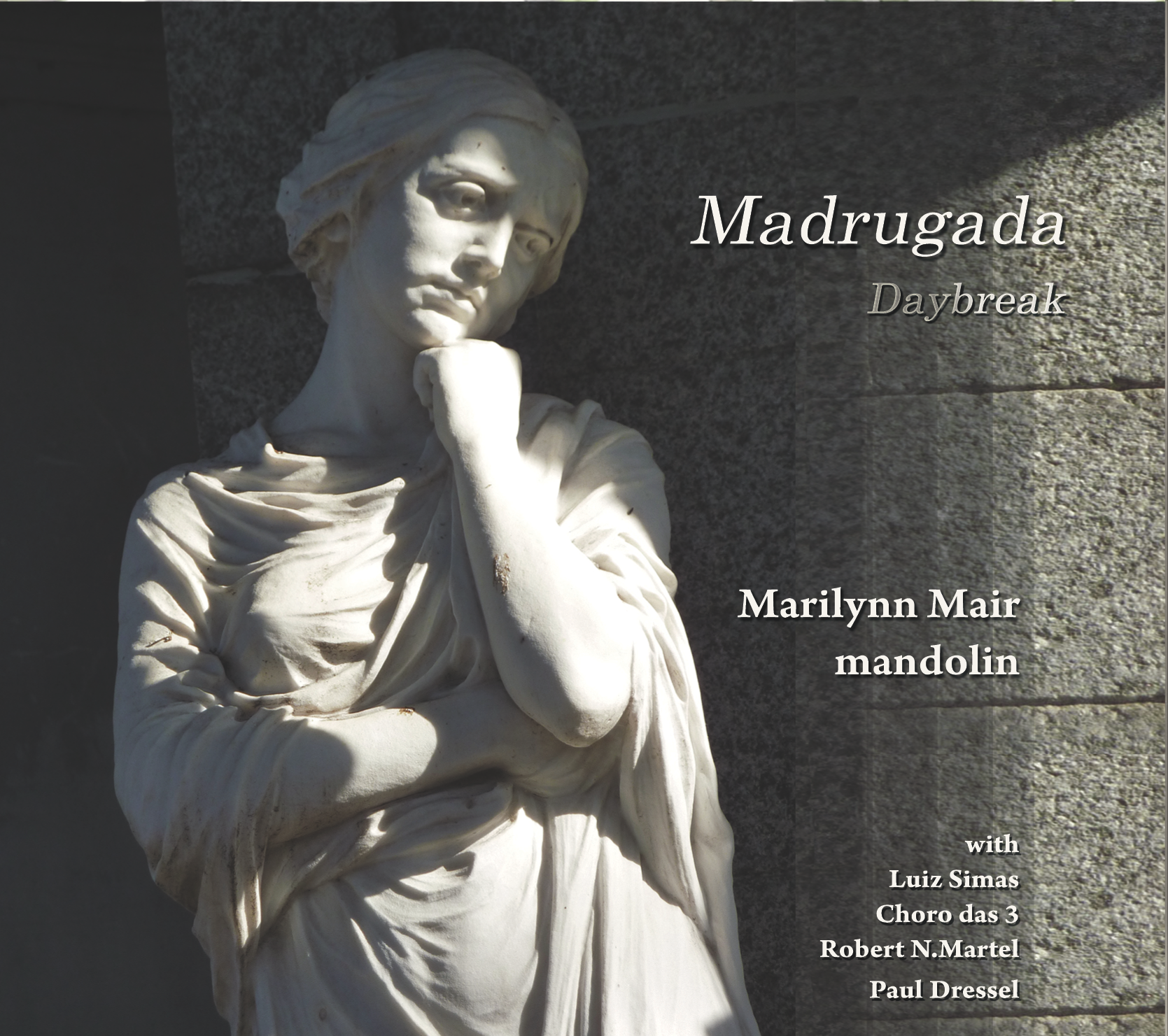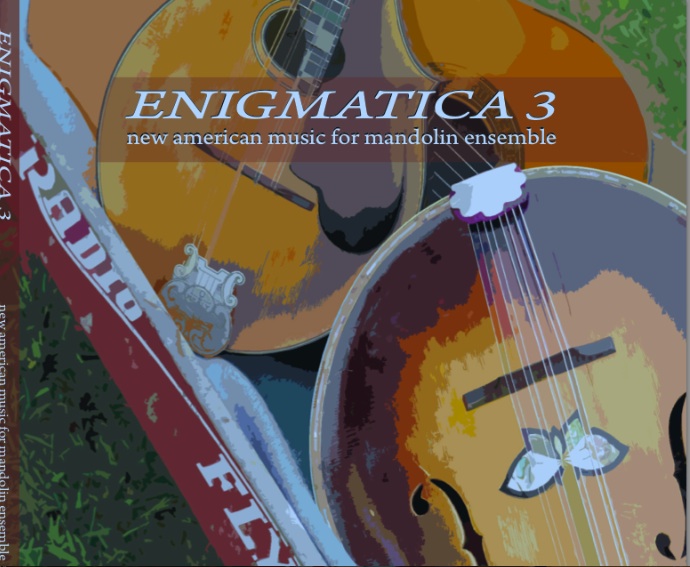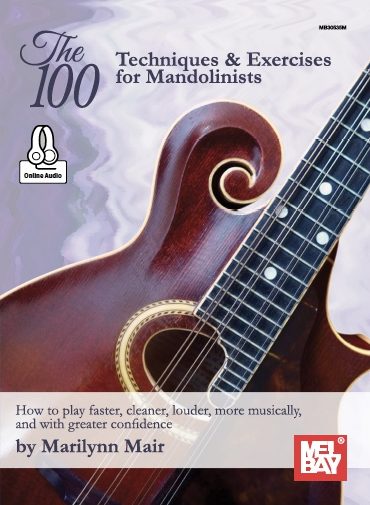This article that originally appeared in “Mandolin Quarterly,” 1999, Vol 4 Nr. 1.
I call myself a “classical mandolinist,” and have at times been asked what exactly that designation means. Is it a term reserved for those who perform the music of dead European composers written between 1750 and 1825? Is it applicable only to those who have studied classical technique, or who play on historical reproductions of Classical-era instruments? Is it a self-designation, or are credentials required? Can one nation lay claim to the title as theirs alone, or is its meaning universal? Can the designation be used to exclude performers who somehow fail to conform to ephemeral criteria, or is it simply a matter of viewpoint? While I can’t answer these questions for anyone but myself, I have pondered a number of aspects and can recall several incidents that have played a role in my choice of appellation.
My exercise in Socratic dialogue was prompted by an off-hand comment heard at the Classical Mandolin Society of America convention last November, as I sat playing a Beethoven sonatina while trying out a brand new mandolin at a luthier’s display: “Finally, some CLASSICAL mandolin at this Classical Mandolin convention!” Having opted to play Brazilian choro with my new quartet in the previous night’s concert, rather than my usual sonata offerings, I first took the comment as a personal rebuke. But as I thought it over, I realized that no one was performing Classical-era music at this event, and no one was playing a Classical-era instrument, or even a reproduction of one. What then made us call the event “Classical”? What made me consider myself a classical mandolinist, despite the fact that I had just played 20th-century Brazilian music on an instrument designed and made in America in the 1920’s?
As a mandolinist, I will always be grateful to Mozart and Beethoven for penning works for my instrument. I have played these pieces, written papers on them for music history courses, even performed them for a friend’s doctoral seminar on Beethoven at the Julliard Conservatory. I consider them an important validation of my instrumental choice. Early in my career, in response to a churlish, “Frankly, I don’t know why you bother,” from a nationally-known “classical” guitar instructor, I could delight in spitting back, “Well, Beethoven and Mozart thought it was worth the effort, and they didn’t write anything for the guitar now, DID they?” Not friendly, maybe, but more socially acceptable than socking him or running from the room in tears. The works of these masters and their lesser Classical colleagues — Bortolazzi, Von Call, Guiliani, Hoffman — are delightful pieces, but for a mandolinist to limit the scope of the instrument to such a slight repertoire would do it a grave injustice.
“No, no,” my Greek chorus interjects, “we just meant that you should play classical music in general, not limit yourself to pieces from the Classical Era.” Well, that’s a good thing, but as one moves out of the 75-year “Classical Era” the diversity of material makes designations difficult. What pieces make the “classical” cut? Certainly Baroque music should be fine — it’s even older and more Eurocentric than the Classical Era. We’ve got two Vivaldi concertos and a host of sonatas by anonymous composers that sound quite refined, if sometimes a little pedestrian. We can pretty definitely accept Romantic-era music too (after all those composers are all dead by now), even though the works of Munier, Calace and many others retain the strong flavor of their folk roots. We can probably overlook the fact that many of these “Romantic” works were actually written in the 20th century, clinging to a style that was old-fashioned but popular at the time.
But what happens when we stray from these mainstays of Italian mandolin to lesser-known colleagues. Do we include the music of Giacomo Sartori and the other barber-mandolinists of the period? What about the émigrés like Giuseppe Pettine? Do they count as “classical,” or does their music slip over the line to “popular”? (It has always bothered me that “popular” and “classical” are seen as musical opposites. If a work is classical does that mean it’s “unpopular” ?) Do we exclude the Romantic-era player-composers because they only wrote for mandolins and don’t have a string of symphonies attached to their pens? And if we do exclude these “lesser” pieces, does a “classical mandolinist” who plays them put his status in jeopardy?
Some of you probably think I’m making too much of small distinctions in nuance. Clearly all that old music counts. But I’m trying to establish criteria before we run into the music of our soon-to-disappear 20th century. Just how far does the definition of “classical” extend there? Surely to the atonal work of Ernst Krenek, a giant in the classical music world for most of the century. But what about the simple folk-like pieces of Hermann Ambrosius or Konrad Wolki — composers who, like Sartori, largely limited their output to works for the amateur mandolin ensembles of friends and colleagues? Are these pieces “classical”?
What about works that weren’t written in Europe? Do we count the music of a Kansas-based composer whose Copland-esque style gives audiences a new appreciation for the power of the mandolin orchestra? How about a Boston composer whose short opera for mandolin orchestra with singers and narrator has audiences leaping to their feet in delight? What about the music of Jacob do Bandolim, a Brazilian composer who took the Romantic-era style of “choro,” itself based on European art music, and developed it into a 20th-century virtuoso mandolin form? Was he transforming folk traditions in the same manner as Calace, or is he disqualified for straying too far from classical norms? Well, what do you say — which of these 20th-century composers should be allowed to keep their “classical composer” IDs?
Leaving the question of repertoire for a moment, we’ll take on the matter of “classical technique.” I’m going to start this question by asking it from the other side — what is “non-classical” technique? An English mandolinist wrote recently in a British mandolin newsletter about a folk mandolin contest he was asked to judge, whose contestants included ” a Venezuelan skilled in Latin rhythms and flourishes with the added technical advantage of having studied with [a German classical mandolin teacher] for some years.” He continued: “An Italian colleague on the panel impressed on me: ‘We must be careful not to judge these people with the criteria of classical music. Can we be sure [he] is not just a classical player churning out some traditional South American tunes with great technique but not real folk spirit?” Another colleague assured us that [the performer] had played Venezuelan folk music before classical and that he knew ‘The Language’, so he took the prize.” The conclusion of the judges: folk music came first, before classical technique, so the contestant qualifies as a folk player. This particular mandolinist, however, also competed in the classical mandolin competition later that day. Was he a “classical” mandolinist in that context, or had he forfeited his “classical” standing by being declared a folk musician earlier?
Years ago, a friend of mine performed the mando-cello part in a mandolin quartet adaption of a Haydn string quartet. When I congratulated him on the group’s performance after the concert he demurred saying, “no, it didn’t really sound classical because only [the first mandolinist] has real classical technique. The rest of us are just folkies.” The first mandolinist had studied mandolin technique, but her background was in the visual arts; my friend had a music performance degree but no mandolin lessons. He, with his classical music training, could hear a difference in sound produced by the technique of a trained player. But can only properly-instructed mandolinists gain “classical” technique? Could it possibly be developed independently by a player with a good ear?
Moving on to the question of nationalistic claims on the term “classical mandolin,” I’ll have to say that I’m frequently troubled by the international mandolin community’s fractious and exclusionary boundaries. Shouldn’t an American self-taught mandolinist winning an American mandolin contest playing a Calace prelude on a 20th-century American-designed instrument, and a German “classical” mandolinist winning a German competition playing the same work on a 20th-century German-designed instrument, both be considered as “classical mandolinists”? Neither is playing his/her own musical traditions, neither is playing a mandolin of the shape favored when Calace was writing, but both are playing, and furthering, the musical traditions of their instrument. If the German player then plays an American piece, or the American plays a German work — isn’t this musical exchange desirable? Sometimes it’s difficult to believe mandolin nationalists think so.
I can play Beethoven mandolin pieces on an American carved-back Lyon & Healy at a prestigious international chamber music venue, like the Newport Music Festival, and receive congratulations for the music, interest in the mandolin, and an invitation to return. Playing the same works at an international mandolin event frequently raises concerns about my choice of instrument, my ability, as a non-Austrian, to interpret the music correctly, and my right, as an American, to even try. “America has no classical mandolin school,” an American colleague was recently told a German mandolin teacher. But there are always the blessed exceptions to the rule. Years ago, after a London recital by the Mair-Davis Duo of 20th-century works for mandolin and guitar, including several then-unpublished American works, a London reviewer asked the late Hugo D’Alton, who was in the audience: “Can you really classify this as ‘classical mandolin’ given her instrument, technique, and the repertoire?” D’Alton simply answered: “Yes,” and went on to say that he considered this significant work performed by a creative artist, so why should he withhold approval?
I have always considered myself a classical mandolinist, by virtue of training, technique, and disposition, but given these variables in criteria, what should I conclude? Where do we begin our definition of “classical mandolinist”? Am I classical because of my technique, or disqualified because of my “modern” instrument? If my instrument’s modern shape is “wrong” then why are other modern versions of the classical instrument “right”? Am I classical because I play Beethoven, or disqualified because I also play Bandolim? But playing Bandolim am I also disqualified from “folk” status because of my classical training?
My inclination, and I suppose it’s very American, is to accept people as they present themselves, treasure good mandolinists for what they do well, and not worry about designation. Frankly, the mandolin portion of the classical music world is a pretty small one, and we can use all the good players we can get! I see this every day, in my role as a Professor of Music at Roger Williams University. My music history textbooks, with their attached sets of CDs, include pages on the works of Beethoven — symphonies, string quartets, piano sonatas — but nary a mention of his pieces for mandolin. The only piece involving mandolin in the entire CD set is one of Anton Webern’s “Five Pieces for Orchestra.” It’s stark, brilliant, early 20th-century, and lasts barely a minute.
The rest of the “classical mandolin” repertoire doesn’t rate a footnote in a year-long music history course. And most Professors of Music know little about the works we hold so important to our instrument. The Professor of the Julliard Beethoven seminar, a distinguished world expert on Beethoven, had never heard the four mandolin pieces until we played them in his class. It’s not that surprising in the world of classical music; since the works are designated as “works without opus,” early pieces written by a young composer for friends and patrons that aren’t considered significant. Even the occasional orchestral work that includes mandolin, by known composers like Mahler, Respighi, or Verdi, doesn’t present the mandolin as a significant instrument, but rather as a folkloric “coloristic” instrument, conjuring up the sounds of Italian serenades. Not a very elevating status for my favorite instrument.
I face the facts every day: in the big-picture world of classical music, the entry for “classical mandolinist” is so small that there is no need for a definition. We are, all of us, dancing on the head of a pin. So why are some of us trying to push the others off? Personally I’ve got better ways to spend time than ruling off spaces and drawing lines to exclude other mandolinists from my club. I’d rather have them playing next to me, broadening the definition, adding to the floorspace. The Greeks define “classical” as a style encompassing clarity, harmony, order, balance, structure, and symmetry; universal in appeal and focusing on the activities of human beings. I think that applies quite well to what I’m trying to accomplish on the mandolin. My definition of “classical mandolinist” is part technique, part repertoire, part sound, part interpretation, part venue, part intent, and all about music. I call myself a “classical mandolinist,” but when asked what exactly that designation means, I’d have to say that it’s mostly a matter of style.




